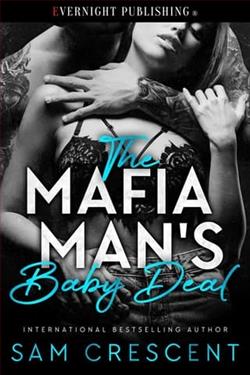Page 93 of The Wedding Dress Repair Shop
Captain Fairford told me that he had been staying at the home of his elder brother and his wife, who lived in a remote part of the Lancashire moors, in order to recover from a serious injury to his leg. He was lodging in town with his fellow officer, Captain Wentworth, in order to see a medical man, for he was eager to rejoin his regiment on the Continent.
Then he laughed and said his brother was such an old woman about his own health, that he had persuaded himself into becoming an invalid, while his wife was sour-faced and disapproving, so there was no fun to be had at Up-Heythram Hall!
He added, with a very speaking look, that he was now even more glad he had bolted to London for a few days, since he had met me. Then he squeezed my hand, which he had drawn through his arm, and I felt the strangest sensations …
As we wandered on along the romantically lit pathways of the gardens, I found myself confiding in him, as I had to no other, about my unhappy childhood at Nettlefold – not too far removed from his brother’s house – and my escape from Bath to eventual success on the London stage.
He laughed and said I was a woman of spirit and he wished hecould see me perform, though he had heard much about me before we had so fortuitously met.
When I remarked that our acquaintanceship must needs be short, for he would soon have to go back north, or rejoin his regiment, he said that he was not yet fit – and as to returning to his ancestral home, the longer he delayed it, the better!
Instead, he proposed to spend as much time in my company as I would allow.
All this was said with the most speaking glances from his hazel eyes. I felt a momentary doubt, for this was the kind of proposal I had only too often received. He may have felt my slight withdrawal, for he added that his intentions were strictly of the most honourable kind.
30
Bridal Paths
The first thing I did next morning was compile a list of the second and much larger order of mannequins, though I had to do some online searching of specialist suppliers first to find exactly what I wanted. Some of the dresses were far from standard modern sizes, and one of the brides in particular had been tall and quite substantial.
I added a couple of extra mannequins to have in stock, and also a much larger dressmaker’s dummy than I already had, then sent the list and all the information to Derek, to run past Honey.
I’d be displaying some of the veils separately and I wanted to consult George about the best kinds of stands for the purpose, but I could do that later. I hadn’t been through all the boxes of accessories yet.
Duty done, I was finally free to bring in the large archive box labelled:
Dress 2
Pregnant First World War Bride
Late November 1918
I’d only lifted out the dress from the top yesterday in order to measure it, but underneath, wrapped in tissue, were the surviving accessories and a copy of the written account of its history, which apparently had been passed down in the family. A great-granddaughter had donated it.
There were no wedding photographs, though that was hardly surprising, given that the bride went into labour at the altar and, after the shortest exchange of vows in living memory, gave birth in the vestry.
It sounded funny in retrospect, but I’m sure it wasn’t at the time. The couple had got engaged during the groom’s last leave and she found herself pregnant after he’d returned to his regiment. They were unable to marry until he came home at the end of the war. By then, the baby was due any day, a wedding had been hastily arranged, and the babyjustmanaged to be born in wedlock.
They called her Mary, although there hadn’t been anything of the Virgin Birth about her conception …
I spread the dress out on the cutting table, deeply grateful to whoever had had the presence of mind to wash it after the ceremony, presumably plunging it straight into cold water, for it was a lot less stained than you might have expected. There were signs of repair to rips in the skirt, too. Really, you could read the whole story of what happened simply by examining the dress.
According to the information with it, the bridal gown had been made by the village dressmaker for an older sister, and then adapted quite skilfully to the pregnant bride’s fuller figure and large bump. The original dress was ivory silk taffeta and inserts of analmostmatching fabric had been added to the skirt and bodice, along with extra ivory glass beading to fill in the gaps in the geometric pattern.
After that, the whole dress was covered in an overlay of chiffon, which rather cleverly pulled it all together.
I thought the original dress must have been quite loose-fitting and with a fairly straight skirt, so you really had to take your hat off to the dressmaker’s clever remodelling!
I examined the long, fitted sleeves finished with lots of fiddly little self-fabric covered buttons at the cuffs. Then, turning the dress over, I undid the hooks and eyes that closed the back, some of which showed evidence of having been wrenched open and then mended. You can learn a lot from the inside of garments: the costumier or dressmaker’s contrivings laid bare.
Perhaps it was the bride’s sister, whose dress it had originally been, who had rescued and washed it – and maybe mended it, too, unless that was the bride herself, later – though I don’t know why they did that, because obviously no one else was ever going to wear it. That part would have to stay a mystery.
Still, after all the drama, the marriage was apparently a long and happy one and the couple went on to have four more children.
While I was working I’d been taking notes and photographs, including close-ups of the fabric, any damage and repairs. Finally, I put it on to one of the dummies and took more snaps from all angles, thinking that really the marks of damage were surprisingly minimal considering.
I turned to the rest of the contents of the box. The white shoes were probably borrowed, since they showed signs of wear, but had been trimmed with taffeta and bead flowers to match the dress.















